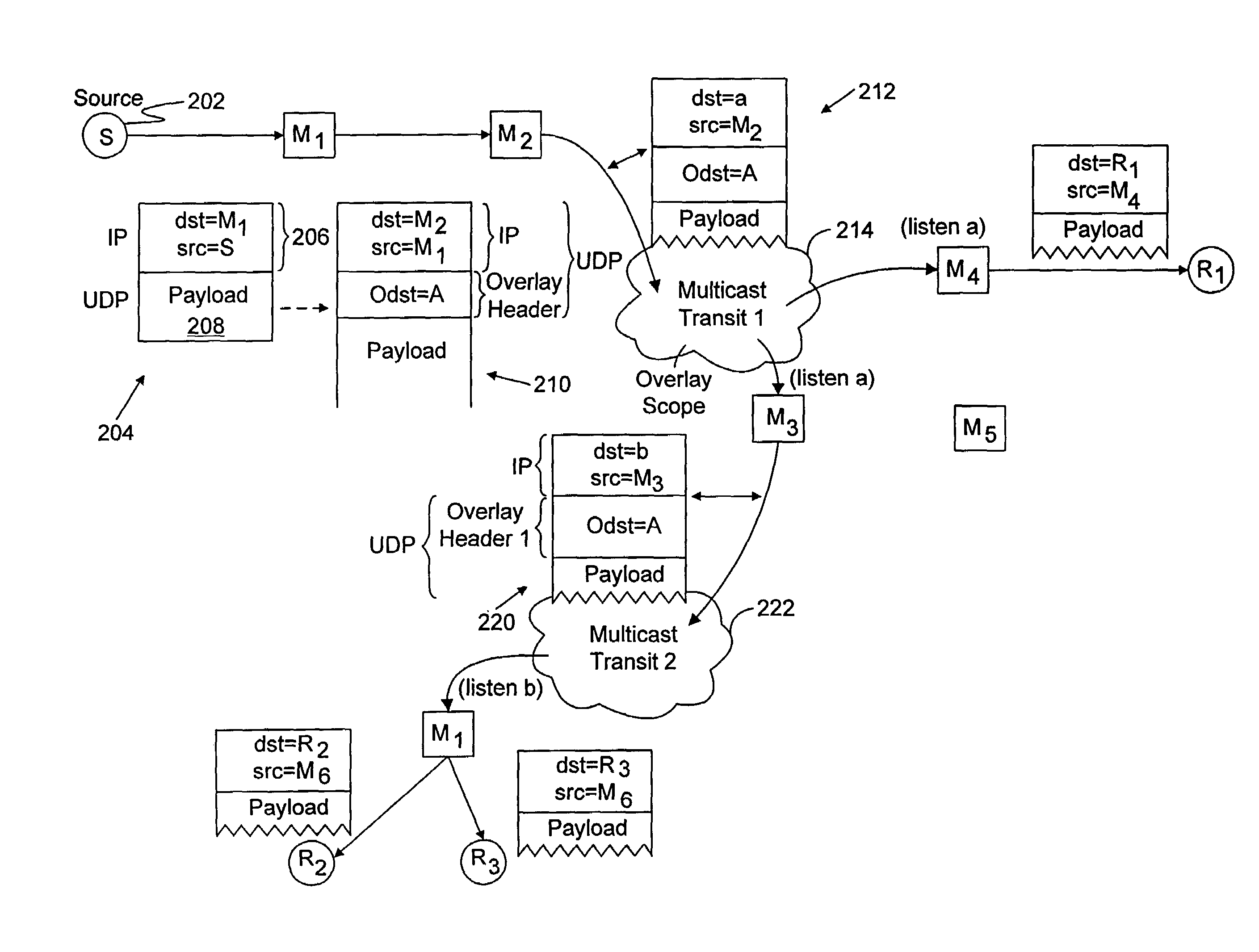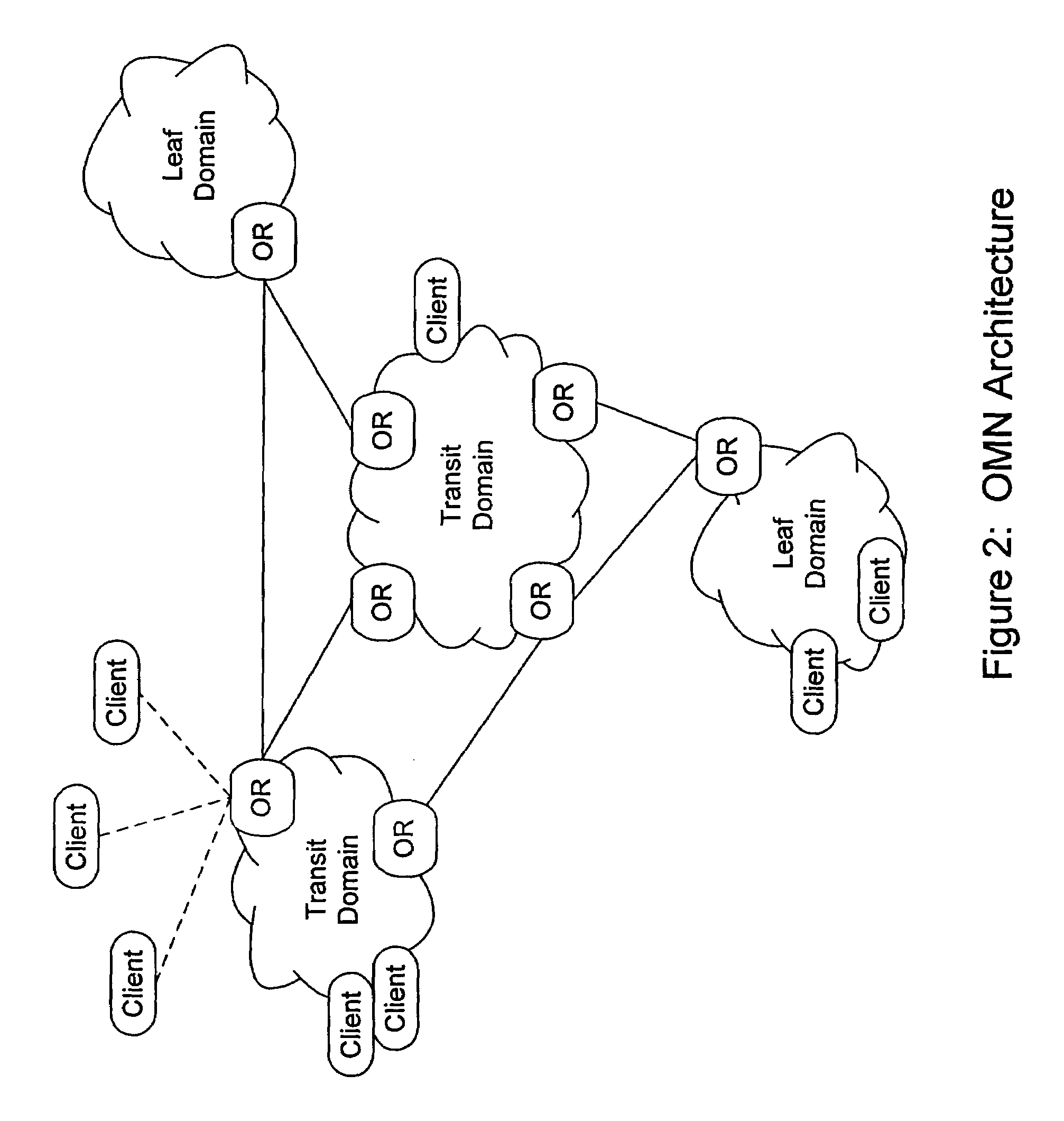Performing multicast communication in computer networks by using overlay routing
a technology of computer networks and multicast communication, applied in the direction of data switching networks, instruments, data switching details, etc., can solve the problems of wasting network bandwidth, unable to scale to very large audiences in the future, and requiring very high data transfer rates across many servers
- Summary
- Abstract
- Description
- Claims
- Application Information
AI Technical Summary
Benefits of technology
Problems solved by technology
Method used
Image
Examples
Embodiment Construction
[0023]The present invention implements “overlay” multicasting. So-called because some of the routing processing by MediaBridge's uses a routing scheme that is independent of, in addition to, and at a higher level than the prior art “native” scheme. With the approach of the present invention, any of the current multicasting techniques, such as DVMRP, PIM, CBT, etc. are referred to as “native” multicasting,” or “native protocols.”
[0024]The invention uses native multicast only as a forwarding optimization where it is locally viable—typically within medium-scale, singly-administered, homogeneous network domains. In this model, the network consists of a set of isolated native multicast clouds upon which a virtual network of application-level routing agents called “overlay routers”. The overlay routers (i.e., the MediaBridge computers) implement multicast routing protocol that makes use of sophisticated application-level knowledge and management infrastructure. Unicast clients can connect...
PUM
 Login to View More
Login to View More Abstract
Description
Claims
Application Information
 Login to View More
Login to View More - R&D
- Intellectual Property
- Life Sciences
- Materials
- Tech Scout
- Unparalleled Data Quality
- Higher Quality Content
- 60% Fewer Hallucinations
Browse by: Latest US Patents, China's latest patents, Technical Efficacy Thesaurus, Application Domain, Technology Topic, Popular Technical Reports.
© 2025 PatSnap. All rights reserved.Legal|Privacy policy|Modern Slavery Act Transparency Statement|Sitemap|About US| Contact US: help@patsnap.com



